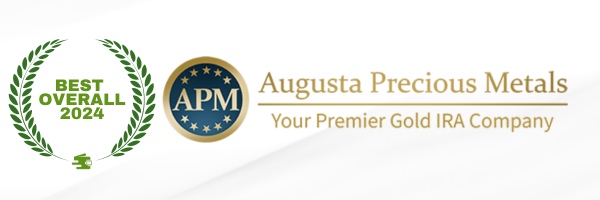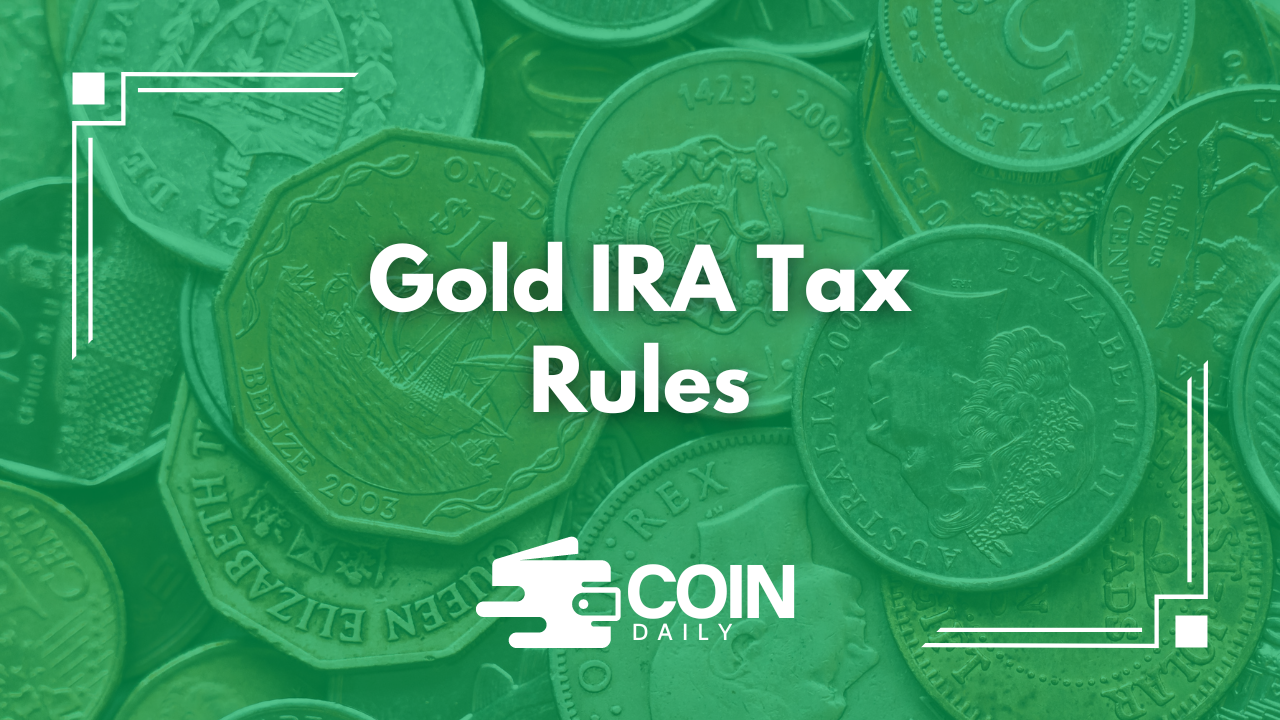Are You Considering Investing in a Gold IRA to Ensure Your Financial Future?
A gold IRA is a retirement account in which you can invest in precious metals. These metals are kept at a third-party IRS-approved depository until you are eligible to take physical possession of them. However, this is far from sufficient information to proceed with this transaction.
A gold IRA, like a standard IRA, is subject to certain tax restrictions and regulations. Failure to comply with these requirements may result in tax fines. As a result, it’s critical to thoroughly understand these restrictions before progressing with your investment.
To assist you, this post will go over everything relating to gold IRA tax requirements, from required minimum distributions to IRS withdrawal rules. So continue reading to learn more.
What is a Gold IRA?
A gold IRA, as opposed to a standard IRA account, allows you to invest in genuine gold rather than stocks or other paper money. This means you can use your hard-earned money to invest in physical gold, which becomes available once you reach retirement age. This is an excellent strategy to protect cash and secure your financial future.

According to Levon Galstyan, CPA and Accounting Consultant at Oak View Law Group, gold IRAs diversify investment portfolios and may protect investors against inflation by allowing them to own a tangible asset. This makes a gold IRA an excellent retirement investment option, especially in today’s challenging economic climate. Galstyan also describes gold IRAs as an investment opportunity:
- Market volatility protection.
- Inflation protection.
- A way to generate income in retirement.
Furthermore, starting a gold IRA account is really simple. You merely need a reputable custodian to assist you setup the account and process your investments in accordance with IRS guidelines. And that’s it! You’re ready to add those beautiful yellow metals to your portfolio.
However, it is important to note that you cannot just add any form of precious metals to your IRA account. Instead, you can invest in particular IRS-approved precious metals that meet certain purity requirements:
- Physical gold purity 99.5%
- Physical silver with 99.9% purity.
- Physical platinum is 99.95% pure.
- Physical palladium with a purity of 99.95%.
The Basics of IRA Taxation
There are two sorts of precious metals IRA accounts, each with its own set of taxation laws. There are two types of precious metals IRA accounts: standard IRAs and Roth IRAs, which have differing taxation policies. Refer to the table below to learn more about how regular and Roth IRAs are taxed.
| Tax Regulations | Roth IRA | Traditional IRA |
|---|---|---|
| Annual Contribution Limits: | $6,500 in 2023 ($7,500 for those 50 and up). This contribution limit is the same for conventional and Roth IRA account holders. | |
| Options for Early Withdrawal | Contributions to Roth IRAs can be made at any time. However, gains distributed before age 59 ½ may incur a 10% penalty and income taxes, unless an exception applies. Roth IRA investment earnings are also subject to a five-year holding period. | Distributions from a traditional IRA before age 59 ½ are taxed and subject to a 10% penalty, unless an exception applies, such as permanent disability or the necessity to purchase/construct a home. This holds true for both contributions and investment earnings. |
| Tax Benefits | Investors with a Roth IRA do not receive any immediate tax benefits for their contributions. However, distributions from such retirement accounts are tax-free. | If deductible, contributions to a typical IRA account reduce taxable income in the year they are made. In contrast, retirement distributions are taxed like regular income. |
| Required Minimum Distributions (RMDs). | Roth IRA investors are not obligated to meet any minimum distribution requirements. | Traditional IRA investors must make minimum withdrawals when they reach a certain age. That age was formerly 72. However, it increased to 73 this year in 2023 and is expected to rise further to 75 in 2033. |
There are two types of gold IRAs: regular and Roth. To make an informed decision about which one best fits your investing objectives and financial constraints, you must first understand the tax implications of each type.
Contributions to the Gold IRA
Aside from the basics, one critical component of gold IRA taxation is the contribution restrictions. While it may appear that you can freely contribute to your gold IRA account because it is your personal savings and retirement investment, there are guidelines in place. The IRS determines your contribution limitations based on the type of IRA account you own.
For example, the maximum Roth IRA contribution in 2022 was $6,000. This contribution was increased to $6,500 in 2023.
Investors over the age of 50 are eligible for a $1,000 catch-up contribution per year. Roth IRAs have no age restrictions, allowing you to contribute even after reaching 70½ or 72. If you choose a traditional IRA to invest in gold, you must be at least 50 by the end of the year to begin contributing, assuming you or your spouse (if filing jointly) have taxable income.
Contribution restrictions apply to both Roth and regular IRAs. According to the 2023 IRS criteria, you can contribute to both accounts in the same year, but the total amount cannot exceed $6,500 for those under 50 and $7,500 for those 50 and older.
Check Out the Best Gold IRA Company of 2024
There are over 200+ gold IRA companies in the US and among all of them, I believe Augusta Precious Metals is the best one so far.

Augusta Precious Metals ranks as the #1 gold IRA company in the US. And that’s for good reason.
They have some of the best product catalogs with gold, silver, platinum, and palladium products to offer. But the main highlight is their dedicated web conference and the added focus on client education.
Augusta has an A+ rating on BBB, 1000+ client testimonials, and has been awarded “Most Transparent Company” in 2023 by Investopedia.
No other company puts as much focus on educating their clients about the different aspects of gold IRAs as they do.
My own experience with them was amazing to say the least.
However, their minimum investment requirement is $50,000 which limits the number of people who can open a gold IRA with them. Still, if you have the budget, you shouldn’t look elsewhere.
Contributions Based On Your Earnings
Roth IRAs have different income limits than standard IRAs. So, depending on your annual earnings, your contribution cap may be reduced or eliminated entirely.
Furthermore, the IRS enables you to contribute to your IRA up to the limit or your yearly earned income, whichever is lower. According to IRS criteria, the cap is considered the contribution limit to an IRA account. Furthermore, admissible earned income for contributions includes W-2 salary, alimony, and self-employment income from a business or farm.
Notably, despite the $6,000 cap, you can only contribute $5,000 to a Roth IRA if your total income from these sources equals $5,000. However, if your income is $6,001 or more, you may contribute up to the $6,000 limit because your earnings exceed the maximum contribution.
Distributions from Gold IRAs
When it comes to IRA tax requirements, there are some restrictions when attempting to withdraw funds from your retirement account. What exactly does this mean? The IRS requires you to start drawing distributions by April 1 of the year after you turn 72 (70 ½ if you achieve the age before January 1, 2020), and by December 31 of succeeding years.
Taxes will also be levied if you withdraw your precious metals or funds after liquidating a particular quantity of them. However, this only applies if you wait until you reach the targeted retirement age and meet the eligibility requirements for gold IRA payouts.
On the other hand, there are several instances in which you may want to remove funds from your precious metals IRA account early. The IRS forbids withdrawals before age 59 ½, which might result in an additional 10% tax penalty.
But that is not all! Instead, there are few circumstances that allow you to withdraw gold IRA funds early without incurring additional tax penalties. These exclusions include meeting financial needs in the following situations:
- Unreimbursed medical bills.
- Health insurance premiums during employment.
- Permanent disability.
- Seeking Higher Education.
- Buying, building, or rebuilding a home.
- Seeking an IRA inheritance.
- For fulfilling an IRS levy.
- During active duty.
- Seeking essentially equal periodic payments for five consecutive years or until age 59 ½.
Tax Advantages of a Gold IRA

Did you know? One of the reasons why gold IRAs are regarded as a great retirement investment option is their attractive tax benefits. Yes, these IRA accounts provide more than just physical asset ownership in retirement. Speaking of which, let us look at some of the key tax benefits of a gold IRA investment.
Capital Gains Treatment
Capital gains tax might provide a tax benefit in a Gold IRA. When you cash out your Gold IRA investments, the IRS treats gold as a collectible, resulting in a 28% capital gains tax rate. However, if you maintain your gold in a Traditional IRA, your earnings are taxed as ordinary income at your marginal rate. When held in an IRA, this discrepancy may result in lower taxes on your gold investments.
Tax-Deferred Growth
Aside from the obvious benefits of investing in a gold IRA, such as inflation protection and wealth preservation, IRAs also provide tax-deferred growth. A gold IRA allows you to increase your gold or other precious metal investments without paying annual income or capital gains taxes while they are retained in the IRA.
This implies that if your gold holdings increase in value over time, you will not be taxed on the profits until you remove from the IRA. As a result, since you are not losing a portion of your returns to taxes each year, this tax-deferral feature can help your assets grow more effectively, allowing your wealth to compound over time.
Furthermore, when you eventually take distributions after retirement, they are typically taxed at your ordinary income tax rate. Depending on your situation, these taxes may be cheaper once you reach retirement age.
Possible Inheritance Benefits
Another significant advantage of a gold IRA is inheritance. However, inheriting an IRA can be difficult, with distinct restrictions for each sort of inheritor, whether you are the deceased’s spouse, kid, or distant relative.
This also means that you can physically hold the gold in your Inherited IRA. You can also transfer some or all of your Inherited IRA assets into precious metals such as gold, silver, platinum, and palladium. Let’s go over the specifics of the additional inheritance benefits you can take advantage of.
Eligible Designated Beneficiary
You fall under this group if you are:
- The surviving spouse.
- Chronically unwell.
- Disabled.
- A minor.
- Or at most ten years younger than the initial gold IRA owner.
If you identify with any of the following, you can:
- Transfer assets to an inherited IRA in your name and choose whether to take RMDs based on your or the deceased account holder’s life expectancy.
- Transfer assets to an inherited IRA in your name and arrange a 10-year distribution schedule. You must liquidate the account by December 31, ten years after the original owner died.
Note: Your ability to use these options is determined by whether the original owner of the IRA was under or over the age of 72.
Designated Beneficiary
If you do not fit into one of the categories listed above, you are referred to as a designated beneficiary and are subject to a separate set of restrictions. In this instance, you have until December 31, following the death of the original account owner, to withdraw the entire balance.
Tax Pitfalls To Avoid
Unfortunately, gold IRAs do not only provide significant tax benefits to their investors. Yes, there are some problems associated with gold IRA taxation. However, they are uncommon, especially if you take care to avoid them. To do so, you must be familiar with them, therefore let us investigate in depth.
Prohibited Transactions
Self-dealing is one of the most serious mistakes that gold IRA investors should avoid. “Qualified transactions” are those that directly benefit the IRA owner or any disqualified persons, such as family members or IRA-owned businesses.
When an IRA owner participates in self-dealing, they effectively use their IRA funds for personal advantage, which is prohibited by IRS regulations. For example, purchasing gold coins from the IRA and using them would be considered self-dealing. Why isn’t this allowed? Because a gold IRA is designed for retirement savings rather than personal usage of gold assets.
Using gold assets in an IRA for personal use before reaching the distribution age is a violation of IRS regulations. Rather, the gold in your IRA must be held in a qualified depository until it is time to disperse it. Infringing on this provision may result in a 15% penalty on the amount of the illegal transaction. A 100% further penalty may be imposed if the transaction is not remedied.
Implications of Taking Physical Possession of Gold
Taking physical possession of the gold in your Gold IRA constitutes distribution. As a result, if you want to physically own the gold, you must pay income taxes on its value at your current tax rate. As previously stated, attempting early withdrawals would also result in an additional 10% tax penalty on your precious metals.
Penalties for Noncompliance
When it comes to tax penalties, it is not limited to the 10% early withdrawal penalty. Instead of avoiding tax penalties, possessing a gold IRA means having to take your RDMs (required minimum distributions) at age 73.
If you don’t, your retirement account will be subject to a 50% tax penalty for the shortfall or amount you didn’t withdraw. While this is a disadvantage of owning a gold IRA, you can have the tax penalty waived if you can demonstrate that the RMD deficiency was the result of a reasonable error.
Reporting to the IRS
To get the most out of your gold IRA investment, you must not only avoid penalties but also file the proper tax returns on time. You should keep the following issues in mind:
Forms Involved
Taxation on Gold IRA payouts is typically disclosed using IRS Form 1099-R. Similarly, IRS Form 1040 is used to file annual tax returns. In addition, if you are subject to early withdrawal penalties, you may be required to submit Form 5329.
Deadlines
To ensure that you submit contributions or seek withdrawals on time, we recommend that you adhere to the tax filing deadline. Notably, the IRS tax reporting deadline for 2022 IRA contributions is April 18, 2023.
Finally, consult a tax professional before reporting to the IRS to pay the appropriate tax on your gold IRA. They can help you complete the necessary documentation accurately, fulfill deadlines, and maximize your tax benefits while avoiding penalties and compliance issues. Furthermore, tax regulations may change at any time. As a result, consulting a professional advisor will keep you up to date on the current IRS regulations for gold IRAs.
Conclusion
Finally, a gold IRA is a wise retirement investment option that may be subject to numerous laws, such as withdrawals and contributions, as well as the rewards and hazards associated with gold IRA taxation. No one wants to suffer tax penalties for an investment they are making to ensure a financially secure retirement.
And you can only do it if you understand the gold IRA taxes rules. This allows you to avoid tax penalties while getting the most out of your gold IRA investment. We hope this extensive explanation will help you gain a better grasp of gold IRA taxation.
If you want to learn about identifying gold IRA scams, I recommend getting this free checklist. It will equip you with the knowledge you need to avoid potential gold IRA scams.



